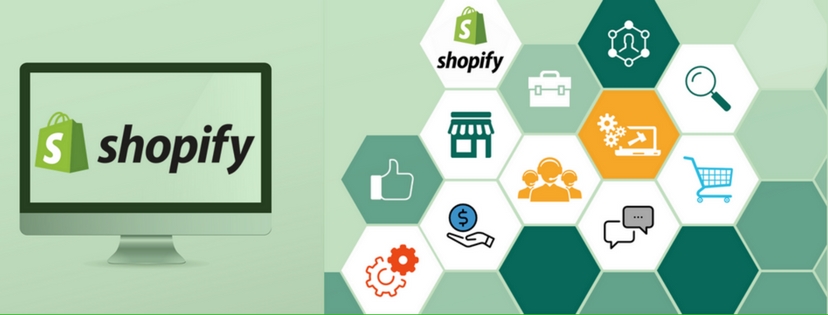E-commerce space has undergone huge investments in the past few years. Online marketplace has grown unexpectedly in both B2B as well as B2C models. Worldwide e-retail sales were accounted at 8.7% in 2016. It is expected to hit 15.5% in next 5 years. In 2016, retail e-commerce sales worldwide amounted to 1.86 trillion US dollars and e-retail revenues are projected to grow to 4.48 trillion US dollars in 2021.

Online shopping is one of the most popular online activities worldwide and the industry is booming. Talking about online shopping, one cannot miss Shopify that has become a synonym to e-commerce.
Shopify is a cloud-based, multi channel ecommerce platform that offers a wide range of customizable features to open your own online store. This is what a small entrepreneur, who has no idea how online stores work and even your favorite glam celebrity, Kylie Jenner uses Shopify to sell her cosmetic products, thus making their e-commerce game strong.
In a recent report, $40 billion total gross sales were recorded throughout the company’s lifetime and merchant growth has increased to 74% since 2012. Shopify is continuously changing the global scenario of e-commerce players. Here, we dissect its model for you so that you understand how shopify works.
How does Shopify earn?
Shopify makes money from its Subscription solutions and Merchant solutions. Subscription based revenue grew to $71.6 million, as reported on August, 2017. As a result, 500k merchants are now using the platform across 175 countries. Company claims to have made sales to 131 million people. Let us have a look on how both these models work.
Subscription Model
Shopify offers three subscription plans; Basic, Professional and Unlimited Plan.
Basic Shopify Plan is $29 per month that lets you sell unlimited products and provides a card reader, a discount code engine, fraud analysis tools and dedicated support.
Shopify Plan can be bought at $79 per month that enables you to sell gift cards, business reports, abandoned cart recovery, report builder and real-time carrier shipping.
Advanced Shopify Plan is $299 per month that offers same features as Shopify Plan, the difference being in commissions and revenue.
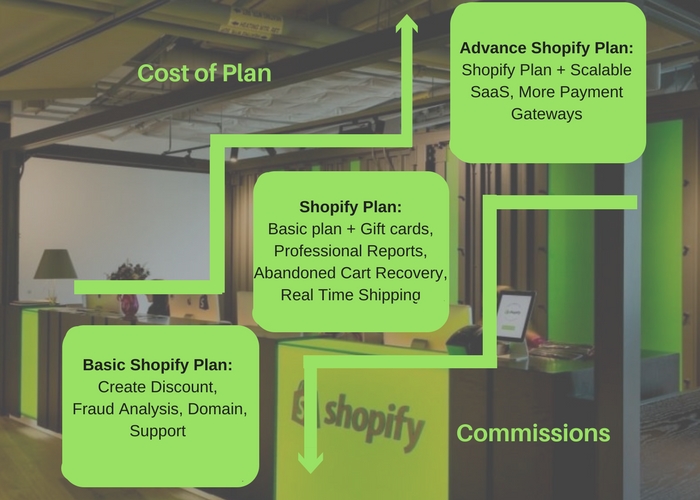
For enterprises that have higher volume sales, there is Shopify Plus that comes with flexible SAAS platform, unlimited bandwidth and 70+ payment gateways. This plan is customizable, hence there is no fixed price. Additionally, the revenues comes from paid themes, apps and domain registrations.
Merchant Model
More profitable than Subscription plans, merchant solutions is growing at faster pace. Let us have a look on different merchant solutions:
Shopify Payments
Shopify offers highly flexible payment system on its platform. Shopify Payments is the in-house payment system, that is powered by Stripe and offers zero percent deduction from transaction fees. If you choose third party payments such as PayPal, then Shopify deducts transaction fee. This deduction depends upon the type of your subscription plan.
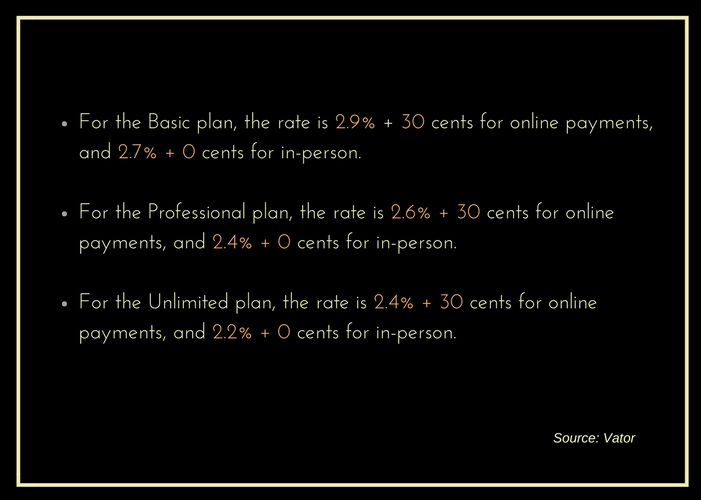
Shopify Capital
For entrepreneurs who do not have enough cash to buy inventory for their business, Shopify Capital offers funds without any complications. Once, the merchant starts making daily sales, Shopify taxes a fixed amount and the merchant cash advance is remitted.
Shopify Capital is limited to the merchants in the United States for now. However, Shopify plans to expand it across other countries to more merchants.
Shopify Hardware Package
Not just an online platform, Shopify also sells hardware setup to run your store. Shopify POS kit offers iPad stand, cash drawer, receipt printer and card reader. The cost can vary from $750 to $1000.
Customers cannot see the bigger picture
Customers do not know about Shopify, most of the times. According to them, they are dealing directly with the merchant. It is like placing order from an e-commerce platform and getting product shipped from the same store. However, looking at the bigger picture makes you realize that the process is not as straight as it looks like.
Here is what the actual e-commerce flow looks like:
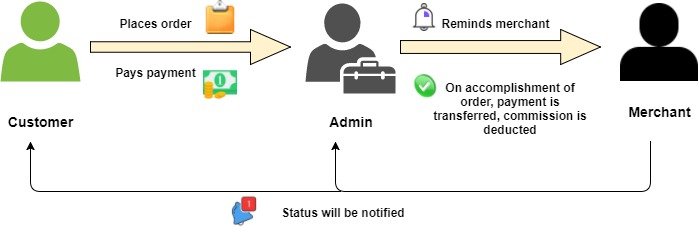
The actual game happens at the backend, that customer will never know. To help you understand better, let us dig in to find more about Shopify’s unique features.
Single Interface For Multiple Platforms
In e-commerce, it is pretty normal to have multiple platforms for selling different products on each. To manage multiple platforms through a single interface reduces a lot of efforts and streamlines your daily business operations. Shopify, known for making e-commerce easy, offers tools for sellers that simplify handling one or more shopping carts. From managing cross platform inventory to tracking sales channels, you can do it all with Shopify.
Abandoned Cart
Everything that makes to the cart is not always bought. Considering various reasons for cart abandonment, Shopify has a way to recover abandoned cart. There are 68% potential customers who leave the website without completing the checkout process. To track such customers, Shopify provides a tool that lets you maintain a list of such users. Using the list of all those users, merchants can run retargeting campaigns with automated emails that have links to products that are already in their cart. These emails can be reminders as well.
Merchants have access to the CRM to efficiently manage all their customer data. Using the details like geo location, interests, gender etc. they can be pitched again using different marketing strategies.
Drop Shipping
Shopify has the perfect solution for entrepreneurs who do not want to manage inventory; drop shipping. With a little upfront investment, you can launch your online store without any inventory. It is basically trading from the supplier to the customer. There is no need to stay committed with one kind of products until they are sold. Simply put: customer places order with your shop and your shop places order with third party supplier. Then without letting your customer know, supplier ships order to customers directly. To keep customers posted with real-time status of their orders, Shopify sends alerts and notifications.
Order Fulfilment
Every business owner, in the initial years consider increased sales as a business growth parameter. That being said, only a well-planned business strategy can make your business sustainable in the longer run. Once your business is up and driving in sales, chaos starts happening. Because all you thought was sales and not an efficient way of fulfillment. Shopify has clearly put in a lot of efforts to automate order fulfillment and then subsequent shipping.
Since, the shipment providers offer shipping in bulk, delivery charges are often reasonable. Moreover, the warehouses normally have partnership with different logistic partners, making their products/services accessible in different regions.
Who should use Shopify?
Shopify is the third most used e-commerce platform after Woocommerce and Magento. For all entrepreneurs, SMBs and large enterprises, Shopify works the best, especially when you are not tech savvy. As mentioned by Shopify founders, you do not need to know about technicalities of the platform as Shopify manages it all. Like we mentioned earlier, different sized companies can avail different subscription plans as per their specifications and budget.
Moreover, Shopify is for people who are looking for a quick and easy e-commerce solution. Since, all the modules are pre-built in Shopify it take much lesser time as compared to Magento, Woocommerce and other platforms. Thus, Shopify has established itself as a quick go-to e-commerce platform that not only saves money but also helps you launch your online store in no time. The given picture summarises Shopify’s market as per different merchant categories and subscription plans.
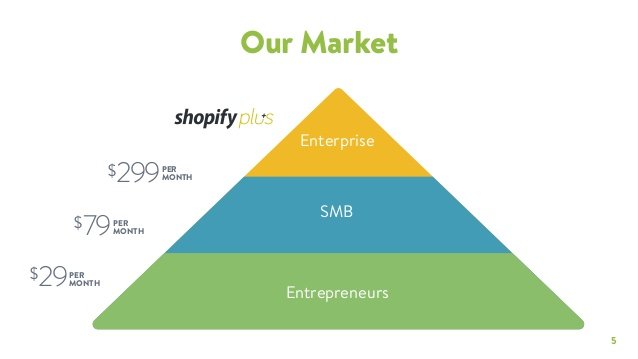
Shopify has carefully built its merchant acquisition strategy that is majorly focused on affiliate marketing. This is one of the reasons that the company has most of its revenue from merchant solutions. Here is a quick glance at Shopify’s merchant acquisition methods.
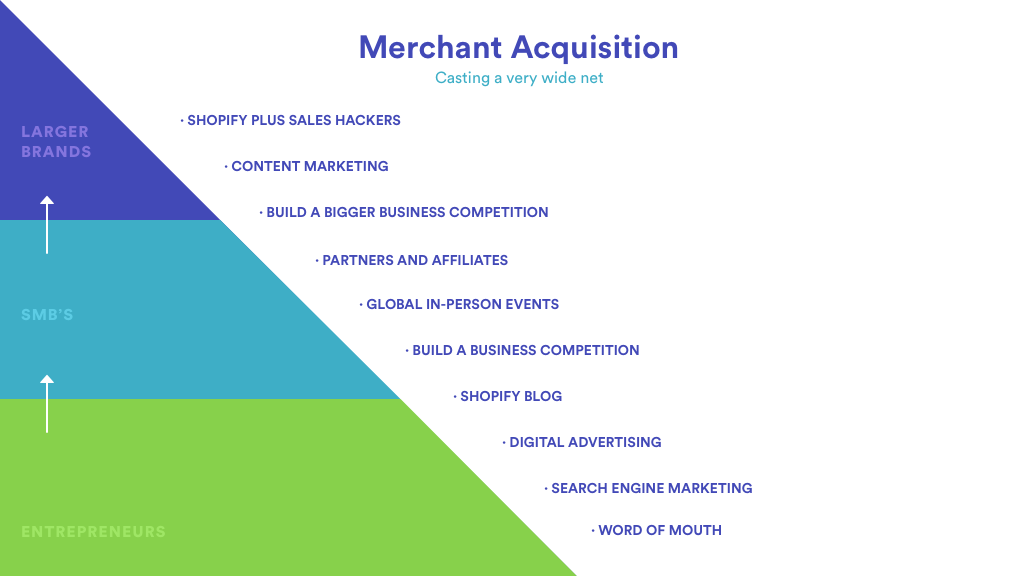
Bottomline
Showcase your products online and start selling the easy way with Shopify. Among other e-commerce players such as PrestaShop, Woocommerce etc. Shopify is preferred because of the user experience it offers. At Code Brew Labs, we have created multiple shopping carts using Shopify and the clients have their online stores running successfully. Are you also looking forward to launch your e-commerce website? Are you not sure which technology to use?
We will help you with a session of free consultation.
